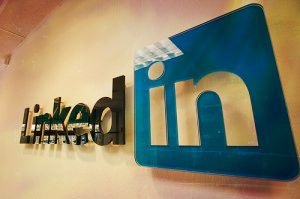
Automation, in general, offers a high return on the investment. Packaging line automation is no exception. However, the benefits are not as easy to calculate as increased production from your production line since benefits can range from lower accident rates to higher quality. Furthermore, the ROI depends on the type of packaging equipment you get. Let’s take a look at how you can get a rough ROI calculation before sharing other ways to estimate the benefits of packaging automation.
Calculate Your Current Labor Costs
Calculate your labor costs with and without automation. How many hours a year do your staff spend on the task you’re automating? Remember that this is not just the wages paid per hour. Factor in benefits, insurance, time off and employee perks. Research how often you’ve had to pay overtime to meet shipping deadlines and how many hours of overtime you paid.
Determine the Labor Savings
Estimate how many hours they’ll have to work with the packaging equipment in place. Something like a case erector could have a significant impact on labor requirements. The number of people you need to run a packaging line might be cut in half. Use conservative estimates on reduced labor needs and multiply this by the cost per labor hour.
Determine Your Cost Savings
Subtract the current labor costs number from the predicted labor costs. This is the simplest and most certain benefit you’d receive from automated packaging equipment.
To calculate the ROI, divide the net benefit of the equipment by the total new equipment cost. Multiply that answer by 100. For example, a packaging system that costs 200,000 dollars and has a net annual benefit of 150,000 dollars has an ROI of 75 percent. Note that none of this takes the likely reduced footprint of your packaging equipment or efficiency factors into account.
Calculating Efficiency Factors
Most businesses know their profit per package and how many packages they produce annually. You would have to use the specifications provided by manufacturers on a case by case basis to determine how much more product you could produce if you have a packaging line that could keep up with your assembly line. If you could produce five or fifteen percent more product per shift, your overall ROI is much higher than the mere labor savings.
These specifications are generally given in bags per minute or cycles per minute. Multiply that number by the number of hours spent on packaging each day by operational days per year to get an annual estimate. This is a baseline estimate. If you could reduce the labor required to work in packaging, you might see better results because those who packed boxes are now manning the assembly line.
Calculating the Payback Period
If you can reliably estimate increased production and profit rates, divide the total new equipment cost by the total periodic benefit from the new equipment to get the payback period for your investment. For example, if the packaging system has a total cost of $200,000 and a $150,000 annual benefit, divide 200,000 by 150,000. The payback period is then 1.3 years. And after that point, the packaging automation has paid for itself while continuing to improve your business’ bottom line.
Conclusion
While most assembly lines are automated, the end of the line tasks like primary packing and case sealing are often ignored. However, you can’t afford to ignore the benefits of packaging automation.
This is an article provided by our partners network. It does not reflect the views or opinions of our editorial team and management.
Contributed content

Founder Dinis Guarda
IntelligentHQ Your New Business Network.
IntelligentHQ is a Business network and an expert source for finance, capital markets and intelligence for thousands of global business professionals, startups, and companies.
We exist at the point of intersection between technology, social media, finance and innovation.
IntelligentHQ leverages innovation and scale of social digital technology, analytics, news, and distribution to create an unparalleled, full digital medium and social business networks spectrum.
IntelligentHQ is working hard, to become a trusted, and indispensable source of business news and analytics, within financial services and its associated supply chains and ecosystems





























